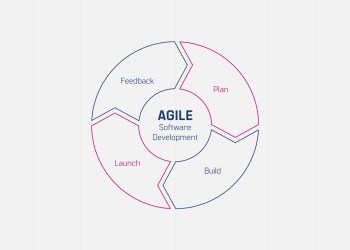By definition, an Application Programming Interface (API) is a set of functions and procedures allowing applications to be created to access features or data of operating systems, applications, or other services.
Let’s break that down with the example of a movie ticket booking app. When you enter a request on your app, say for the timing of a movie show, you trigger a query on the databases of several theaters, the information you need is sent back to your app, and you get to know there is a noon show at a theater near you.
Here’s what’s happening behind the scenes – since your app can’t query third-party databases, it instead interacted with the application programming interface of each theater and retrieved the information requested. The API acted as a communication interface between computer systems – in this case, your application and the third-party databases of the theaters. The API is basically the link that enables the information to be requested and retrieved.
So, how do APIs work?

In general, the functioning of an API follows this 5-step process:
- The process begins when a client application initiates an API call for information (also called a ‘request’).
- The request is authenticated with a third party app using an appropriate authentication method.
- The API request (along with the authenticated token) is made to a third party app over an SDK (software development kit, which also consists of APIs) or through HTTP protocol. SDKs help to easily integrate apps with services.
- The third-party app validates the authentication token and the request is processed. Token based authentication works by ensuring each request is accompanied by a signed token which the server verifies.
- The response is generated and sent back to the client app. The response time should ideally be 0.1 – 1 second.
Making use of APIs delivers several major benefits.
Efficient app development
Developing functionality from scratch is more expensive and time-consuming than using an API. Enterprises that leveraged APIs recorded a significant increase in productivity of 59% across several crucial elements of their businesses, says Global NewsWire report that called API integration a “differentiator and an enabler for businesses”.
System integration
Enterprises use a huge number of apps, with a different app for each requirement. If they don’t communicate with each other, data is analyzed in isolation and you don’t get the full picture. APIs help with collaboration and data sharing, and since they allow content to be embedded from any site or application more easily, also guarantee an integrated user experience.
Data analytics
APIs provide accurate data analytics in the sense one can integrate AI/predictive analytics tech through an API. This helps you analyze unique buyer’s journeys, upsell/cross-sell, push notifications/reminders based on previous selections, etc, and therefore improves overall customer experience and thus sales.
Security
API services enable better detection of malware and code insertions in web applications, enabling faster response times. APIs can track and block future attacks from the same source as well as query databases of known malicious sites to verify the safety of sites.
There’s a lot going for APIs, but it’s important to guard against some common drawbacks of APIs as well.
Security risks
By 2022, vulnerabilities in APIs would constitute the biggest percentage of data breaches experienced in enterprise web applications, says a Gartner report. How to overcome these security risks is to ensure APIs are part of the DevOps pipeline and that means keeping track of them and their security, to minimize the risk of theft of API keys, passwords, and usernames as well as broken authentication and authorization. If APIs are regularly tested, vulnerabilities can be identified and addressed.
Over dependency
APIs are essentially a way to access functionality developed by someone else. While using a third-party developer simplifies the development of the app, over-dependency on the provider is a risk for the application’s business viability.
When it comes to developing and leveraging APIs, working with the right service provider plays an important role in ensuring a successful outcome. CloudNow delivers clean, well-documented, integrated, easy-to-use, flexible, and adaptable APIs, helping to get your business API-ready.










